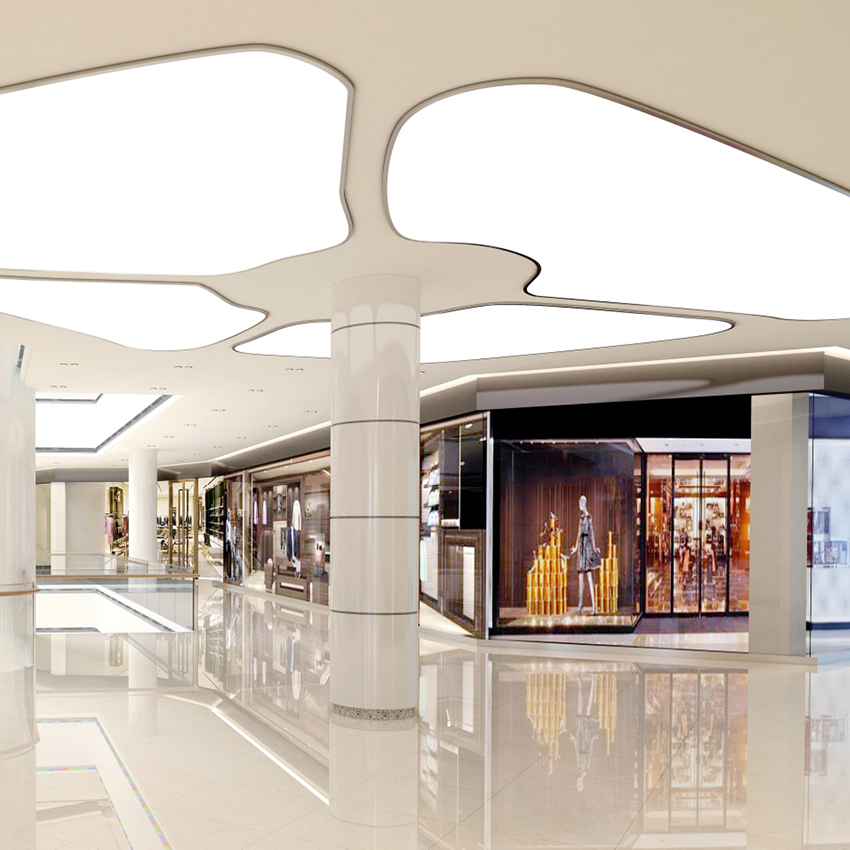The coronavirus has cast a pall over malls, adding insult to injury for many of the nation\’s malls already under siege. Dr. Nancy Messonnier, Director of the Center for the National Center for Immunization and Respiratory Diseases at the CDC, said, \”Ultimately, we expect we will see community spread in this country. It\’s not so much a question of if this will happen anymore but rather more a question of exactly when this will happen and how many people in this country will have severe illness.\”
During her briefing, she outlined three categories of non-pharmaceutical interventions or NPIs to contain community spread of the virus. There are common-sense personal NPIs like washing hands, covering coughs and not touching one\’s face. Environmental NPIs include frequent washing of surfaces people touch.
Crowd Disturbances
And then there are community NPIs, \”Social distancing measures designed to keep people who are sick away from others,\” she said. \”These are practical measures that can help limit exposure by reducing exposure in community settings.\” In other words, staying away from other people and keeping out of public places, like malls, to avoid potential exposure.
Recognizing there is a tremendous amount of uncertainty about what\’s to come because this is a new and totally unpredictable virus, Dr. Messonnier stressed that community interventions will vary depending on local conditions. But she also said, \”We would implement these NPI measures in a very aggressive, proactive way,\” which could be a death blow to many of America\’s malls under rising pressure to survive.
Already Americans are steering clear of malls, according to a recent survey among 2,000 adult Americans conducted February 25-26, 2020 by Coresight Research.
\”U.S. consumers are already becoming cautious-and if the situation worsens (or even the perception of the situation), U.S. consumers could dramatically change habits to reduce the risk of infection, and this could hit retailers hard,\” they report, adding that some 28 percent of those surveyed said they are already steering clear of public places, like shopping centers, entertainment venues or changing travel plans.
Malls have not kept pace with the changing expectations of consumers in an omnichannel world where shopping, like going to the mall, has been disintermediated from buying, thanks to the ease of ordering just about anything anytime online.
Further, 58 percent said they will avoid public areas or travel if the outbreak worsens in the U.S., with about one-fifth as of now uncertain what they will do if it becomes more of a threat. Frankly, those undecideds may have no choice depending upon the measures enacted by public health officials.
Digging deeper into consumers\’ expectations of how their behavior will change, shopping centers and malls are the first place they will avoid (75 percent), followed by public transportation (73 percent) and international travel (68 percent).
Malls on The Edge
Could there be a worse time for this threat to descend on the nation\’s malls? Back in 2017 Credit Suisse predicted that as many as 25 percent of the nation\’s 1,169 malls, or some 275, would close by 2022. It raised a lot of eyebrows at the time, but not that much alarm since it was five years out and people figured a lot could change by then.
At about the same time, Green Street Advisors conducted an analysis of 950 malls that identified the most at-risk malls, the 300 or so malls that were classed in the bottom C and D categories. Commenting on the results that found over two-thirds of the malls studied suffered a decrease in the number of national tenants, they wrote: \”While the sector trend is certainly negative, the malls experiencing outside national tenant vacancies are more likely to experience rapid deterioration or need significant capital investment.\”
Sadly, malls have rapidly deteriorated since then. In 2019 store closings reached historic highs, with some 9,200 major retailer stores shuttered, following 5,437 closed in 2018. While the International Council of Shopping Centers (ICSC) says mall occupancy rates \”remain high at 90 percent,\” Reis Moody\’s Analytics counters that by reporting the current 10 percent mall retail vacancy rate has reached an all-time high, more than at any time during the past two recessions.
Many of those vacancies are mall anchors, which have historically been flagships that draw traffic to malls. Sears, long a fixture in the nation\’s 1,169 malls, has shrunk from 863 stores in 2000 to some 540 today, nearly 40 percent of its fleet. J.C. Penney\’s has dropped from 1,075 in 2002 to 864 in 2019. And Macy\’s just announced it will close 125 of its stores over the next three years. The move will leave Macy\’s only about 400 stores remaining after it reached a high of 773 stores in 2014.
These trends are setting up a crippling downward spiral. As malls lose not just their anchor tenants but in-line tenants too, existing malls give people fewer and fewer reasons to shop there. The result is that C and D malls get even weaker, with the potential of more B malls potentially slipping into the C and D category, and even the A malls are struggling to attract new tenants. Luxury mall mainstays, like Nordstrom, Saks, and Neiman Marcus, are opening more off-price stores while selectively shutting down their full-priced nameplates.
Out of Step
Malls have not kept pace with the changing expectations of consumers in an omnichannel world where shopping, like going to the mall, has been disintermediated from buying, thanks to the ease of ordering just about anything anytime online.
Retailers are leaning into this shift and in 2020 they are going to pick up the pace of investment in digital transformation, putting malls that depend on foot traffic in an even tougher spot. \”2020 will be the year of digital growth,\” predicts BDO\’s Natalie Kotlyar, lead analyst in a just released study entitled \”Retail Rationalized\” that surveyed 100 retail CFOs at retailers with revenues from $250 million to $3 billion.
\”Retailers are banking on the world of digital to take them through 2020,\” she continued, noting that 67 percent of those surveyed identified digital transformation as their number one growth strategy this year. Of note, only 14 percent of the CFOs surveyed work in pure-play e-commerce retailers and 86 percent are with department stores, big-box, specialty or discount retailers.
With so many retailers pivoting toward e-commerce, the need for more physical stores will drop and malls, in particular, will suffer. \”It will have a snowball effect. People today are looking for convenience. If they go to a store, they want to shop quickly, get what they want and get out,\” Kotylar says. \”Strip centers and big-boxes fill the bill. People don\’t want to spend their Saturday afternoons walking around the mall. It is crippling malls.\”
To the Rescue
From an unexpected quarter comes guidance for malls across the country to recover from the multiple hits they have taken and may take until the coronavirus threat subsides. It\’s contained in a report, entitled \”Reinventing Retail: The Novel Resurgence of Independent Bookstores,\” by Harvard professor Ryan Raffaelli who immersed himself for eight years in the world of independent bookstores.
While this working paper has immediate application to bookstore owners and managers, its implications go much farther. It provides a road map for any mall into how to survive, even thrive against the competitive onslaught of Amazon.
\”My research examines how industries, organizations, and business leaders reinvent themselves in the face of radical technological change,\” Raffelli writes. \”In the context of retail, seismic shifts are affecting the way consumers engage with online, big box, and local retailers. Independent bookstores provide a story of hope for community-led businesses.\”
He discovered a formula that local indie bookstores have used to beat Amazon at the bookselling game in what he calls the 3Cs – Community, Curation, and Convening. Let me translate his research findings and apply them to malls specifically.
Building a Community with Customers
The concept of community as described by Raffaelli extends beyond localism as a social movement and way to support the local economy. Community connects customers with content in the store to build truly meaningful relationships.
Such a community center is just how the ICSC describes malls. They are \”integral to the social fabric of communities by providing a \’third place.\’ They offer space to be with friends and family when not at work or at home.\”
What makes a community center thrive? Yes, it is partly shops, partly restaurants, movie theaters, and playgrounds, but so much more. Thriving communities are public hubs that include schools, libraries, government offices, post offices, hospitals, churches, museums, historical societies, banks, transportation centers, parks, and more that serve the needs of people.
Elements of each of these can be brought into the mall.
Curation Assures Retailers Offer What Their Community of Customers Crave
Curating the retail inventory to make sure it meets the needs and interests of the local community is another critical component for indie booksellers\’ success. Mall owners and developers are equally responsible for curating their collection of stores, restaurants, public services, and spaces to meet the needs of the local community.
For example, a recent Gallup Poll found that more adult Americans visited libraries last year than went to the movies, live sporting events, museums, concerts, amusement parks, and casinos, among other activities. Further, the most active library users were women and young people aged 18-to-29, just the kind of potential customers that malls need to cultivate in their communities. So why don\’t malls invite the local library in as a public service?
To become a true community center, not just a place for people to spend money, malls need to adopt a public service approach in the curation of their offerings. That represents a radical shift for malls, but one that is right for our time.
Consumers today are more involved than ever in social and political causes. Malls can play in that space to knit themselves into the heart of their local communities, with additions like a post office as well as offices for elected officials and public services. They should provide community event spaces to host town hall meetings, create learning spaces for children, and support local museums, historical societies and non-profit groups with space for special displays and community engagements.
And, of course, malls can reach into the community to sponsor fun special events, like art shows, live concerts, craft demonstrations, clothing repair, recycle, exchange events, wellness and sports clinics, local wine and beer tastings, the list goes on.
Natalie Hwang, the managing director of Simon Ventures, says what\’s needed are new ways of organizing and arranging the mall environment, or \”dynamically recalibrating spaces.\” She calls on malls to think of their spaces as places to \”leverage different content platforms,\” content being the collection of stores, the restaurants, the special events, and other tenants and attractions that make up the mall.
Curation is the way malls can create new and different content platforms.
Convening Gives a Reason for People to Come Out and Commune
Successful bookstores are places for people to gather together and where community ties are strengthened. Raffaelli explained they borrow the \”Third Place\” strategy, originally identified by sociologist Ray Oldenburg, not Starbuck\’s Howard Schultz, as \”a gathering place where people come together outside of home or work that is accessible to the general public and does not set formal criteria of membership or exclusion.\”
Raffaelli wrote that indie bookstores have amplified and extended the third-place concept by hosting special events. Noting that some of the bookstores in his study host as many as 500 events per year, Raffaelli said these retailers recognize they are competing not just for their customers\’ discretionary money, but their time. So, they offer people events that bring them out to the store to have a worthwhile experience. Many of the bookstores studied have added full-or part-time event managers to oversee these programs.
In the world of malls, McKinsey foresees this shift, predicting that the mix of tenant to public spaces will shift from the current 70 percent to 30 percent mix to 60/40 or even 50/50. \”When this happens, these expanded public spaces will need to be planned and programed over the year much like an exhibition. They will be managed more like content and media, instead of real estate,\” the company writes.
So, for malls, the manager in charge of special events, programming, and public services should have just as much clout in the mall organization as the manager in charge of leasing.
By providing more meaningful experiences to people in the local community, malls will deliver the most meaningful experiences their retail tenants want: a place for customer acquisition, not just a place to conduct transactions.
Resurgence of Independent Bookstores Provides a Roadmap for the Resurgence of Malls
Based upon the 3C\’s practices of community, curation, and convening identified in Raffaelli\’s research, and backed up by research from the American Booksellers Association, independent bookstores have reversed their slide which went from a high in 2005 of over 2,500 stores to 1,651 in 2009. Since 2009 the number of indie bookstores has risen 49% back up to over 2,500 last year.
While big-box bookseller Barnes & Noble reported revenues decreased by 3 percent in fiscal 2019 ending April 27, 2019, the ABA reported sales among its members grew an average of 5 percent year-over-year in 2018. That is a level of growth any retailer would be happy report.
That\’s why the findings in this working paper are important not just for bookstores but malls to embrace. \”Through practices like community, curation, and convening, bookstores [and malls, I would add] authentically connect consumers with the values (e.g. localism) they may espouse,\” Raffaelli concluded.
The major challenge for malls is to think of their physical spaces not just as places to conduct business but as places where people will want to come and spend time. Mall owners, developers, and managers need to think of their malls as content platforms that support the many facets of people\’s lives. In that way they will then facilitate retail sales by recognizing and understanding the mall\’s place in the community and connecting with that community through shared core values and aspirations.
An AT Kearney study entitled \”The Future of Shopping Center,\” authors Michael Brown and Matt Lubelczyk summed it up: \”To succeed in the future, the industry needs to think like the customers it serves.\”
That AT Kearney report concludes: \”The future of retail real estate is as robust as the industry\’s imaginations. Future success depends to a large degree on being able to \’unlearn\’ the lessons of the past. Tomorrow\’s success will belong to those operators and tenants willing to break from yesterday\’s patterns and practices and fully embrace a consumer-driven future.\”
That future is to become the new American \”Main Street,\” where people feel a real sense of community and belonging.





